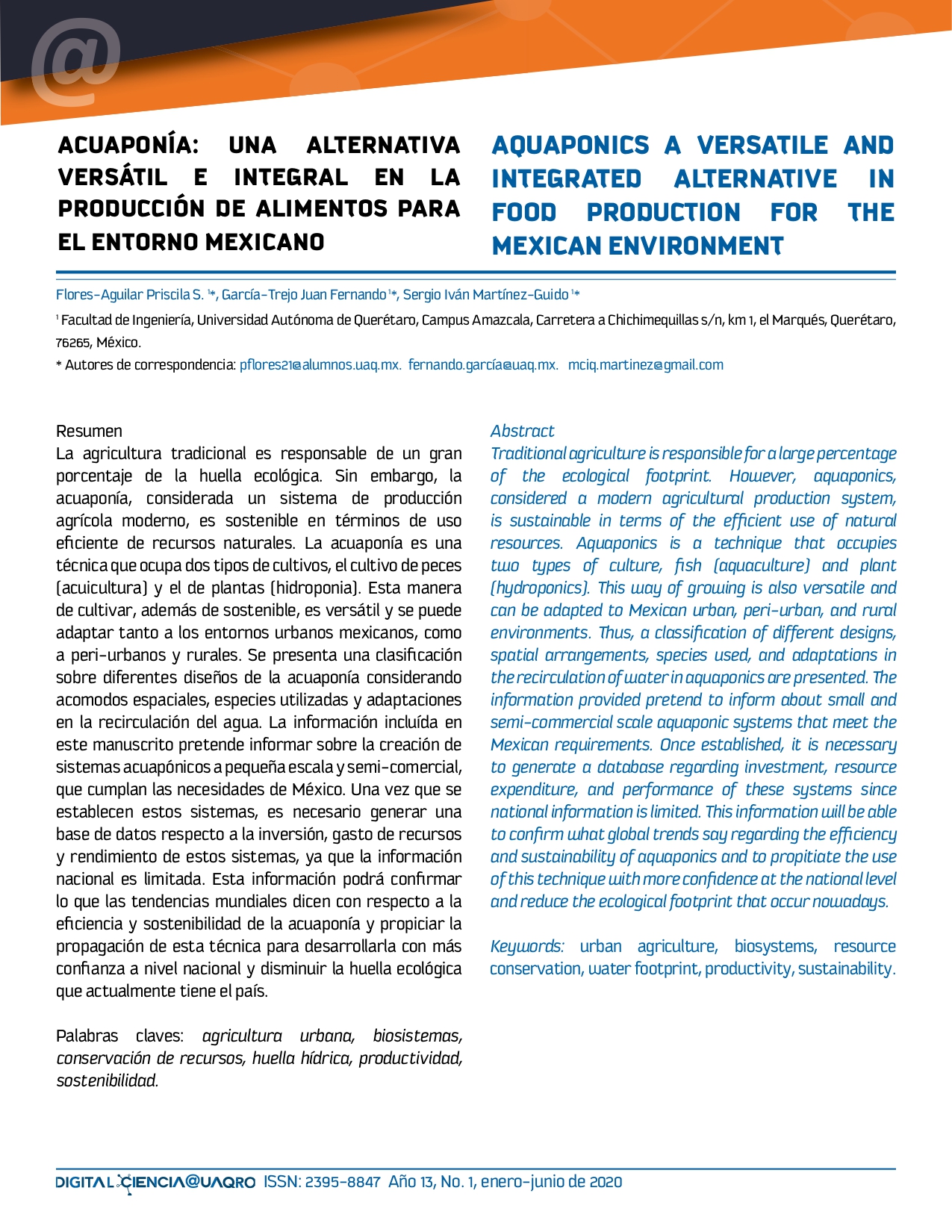Abstract
Traditional agriculture is responsible for a large percentage of the ecological footprint. However, aquaponics, considered a modern agricultural production system, is sustainable in terms of the efficient use of natural resources. Aquaponics is a technique that occupies two types of culture, fish (aquaculture) and plant (hydroponics). This way of growing is also versatile and can be adapted to Mexican urban, peri-urban, and rural environments. Thus, a classification of different designs, spatial arrangements, species used, and adaptations in the recirculation of water in aquaponics are presented. The information provided pretend to inform about small and semi-commercial scale aquaponic systems that meet the Mexican requirements. Once established, it is necessary to generate a database regarding investment, resource expenditure, and performance of these systems since national information is limited. This information will be able to confirm what global trends say regarding the efficiency and sustainability of aquaponics and to propitiate the use of this technique with more confidence at the national level and reduce the ecological footprint that occur nowadays.

This work is licensed under a Creative Commons Attribution-NonCommercial 4.0 International License.

